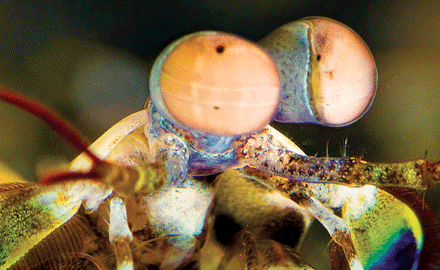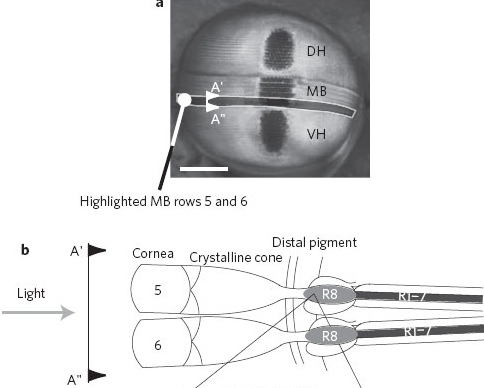On September 28, I reported on the keynote lecture on Why are animals colourful? Sex and violence, seeing and signals Justin Marshall gave at the AIC in Sydney. Prof. Marshall gave a description the mantis shrimp's eye noting how it can see polarization with the help of a structure like a kind of nanotube.

With his colleagues, Prof. Marshall has just published a letter in Nature Photonics 3, 641-644 (2009) with the title A biological quarter-wave retarder with excellent achromaticity in the visible wavelength region.
This paper explains in detail how the mantis shrimp detects polarization. The authors illustrate how a novel interplay of intrinsic and form birefringence results in a natural achromatic optic that significantly outperforms current man-made optical devices. Achromatic here means that polarization detection is independent from the wavelength (±2.7º), which is something we humans do not really know how to build.
A syntectic mantis shrimp eye could be a boon for remote sensing. However, with mother nature being and order of magnitude better than what physicists can build, this will not happen any time soon. It is interesting that this structure has not been repeated in any other animal, as far as we know.





No comments:
Post a Comment